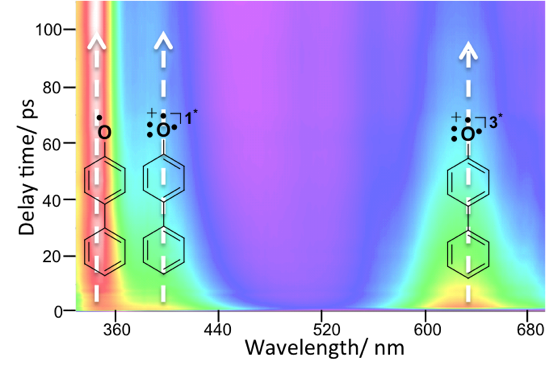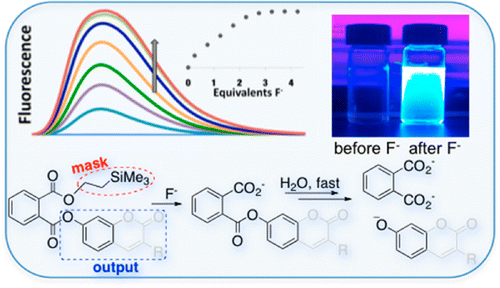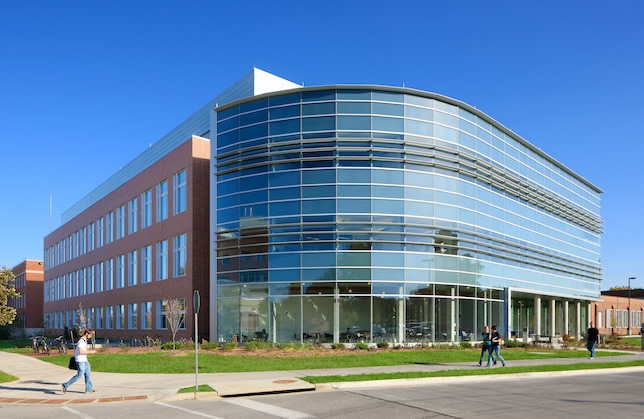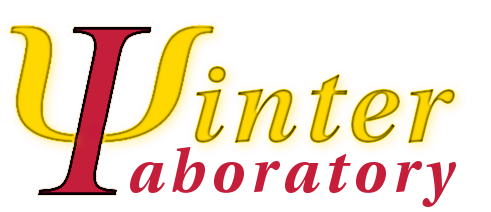
PHOTOCAGES
We are developing new photochemically releasable protecting groups to control when, where, and how much of a bioactive substrate is released in a biological system using targeted pulses of focused light.
more
radical materials
We are working towards stimuli-responsive plastics and materials by incorporating SPIN-switchable building blocks into their structures. we achieve changes in material properties upon a stimulus by changing the spin states of free radical-containing materials rather than by changing the chemical structure, allowing us to get large changes in material properties with mild stimuli.

Oxenium ions
We are studying oxenium ions, important reactive intermediates of formula R-O+, using laser flash photolysis, trapping and product studies, and computational analysis.
more
Releasable linkers
We are synthesizing a new class of releasable linkers that permit substrates to be released in cells in response to different triggering stimuli. Such releasable linkers are useful in sensors and drug delivery applications.
morerecent Group News
-The group is awarded a $400,000 grant from the National Science Foundation for work on our photocaging project.
-The group is awarded a $110,000 grant from the ACS Petroleum Research Fund.
-A collaborative $1,800,000 grant involving our group is funded by the Department of Energy to develop next-generation imaging technlogies.
- -Our group's collaborative paper with the Smith group, “ BODIPY-Derived Photoremovable Protecting Groups Unmasked with Green Light.” is accepted in JACS, and becomes a "most read" paper, highlighted in Nature Methods.
-
- -Art is promoted from assistant professor to associate professor with tenure.
- -Congrats to Pat, Pratik, Christie, Alex, and Katie for receiving their PhDs! Pat and Pratik are off to do postdocs at Univ. of Minnesota, Christie to Indian River State College, Alex to a manager position on the Iowa Corn Board, and Katie to a professorship at a University of Wisconsin campus!
- -Congrats to Rita for being a Cotton-Uphaus Award finalist!
- -Congrats to Pratik for winning the Sayre Chemistry Scholarship!
- -Congrats to Toshia for winning the Alpha Chi Sigma Award and the ISU Leadership award!
- -Toshia's paper, "A Fine Line Separates Carbocations from Diradical Ions in Donor-Unconjugated Cations" is accepted in JACS
- -Mark and Alex's paper " “A Radical Spin on Viologen Polymers: Organic Spin Crossover Materials in Water" is accepted in ChemComm in the Emerging Investigator Issue.
- -An interview about the group's ChEFS Initiative is featured by IPRT.
- -Congrats to Toshia for winning the Mary Helen Merriam Stewart Scholarship!
- -The group receieves a $100,000 grant from the PRF for studying oxenium ions.
- -Art wins the ISU Early Achievement in Teaching Award
- -Art wins the College of Liberal Arts & Sciences Early Achievement in Teaching Award
- -Art wins the Cassling Family Teaching Award
- -Art wins the Cottrell Scholar Award from the Research Corporation.
- -Art wins the Wilkinson Undergraduate Teaching award.
Research interests
Research in the Winter lab focuses on the development of new chemical tools for biological and medical applications. Philosophically, we take the view that many problems in biology are at heart problems in mechanistic physical organic chemistry. Using a joint theoeretical/experimental approach, we design and synthesize chemical tools for biological applications, including fluorescent probes for dynamic live-cell imaging, chemical mediators for targeted drug delivery, and switch-on MRI contrast agents. On the basic research side, we investigate the reactivity and properties of short-lived reactive intermediates in solution using high-level computational studies in combination with pulsed laser spectroscopy.
The new 75-million dollar chemistry research building, Hach Hall, has finished construction.
The new LEED-certified building includes automated lighting with occupancy sensors, chilled water circulation, and large windows for natural lighting. The new building was dedicated by Kitty Hach-Darrow with a bang!

